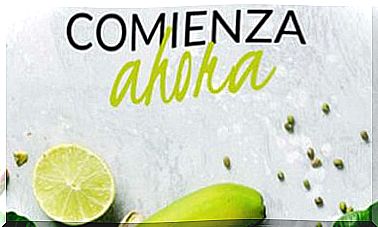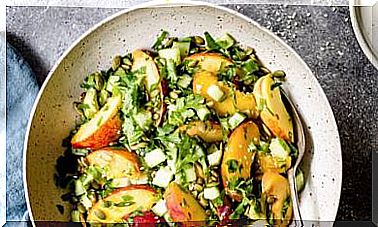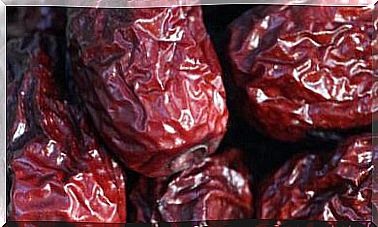These Are The 16 Most Addictive Foods
The problem is not that they are delicious, it is that we cannot stop eating them, they are very caloric and provide us with more fats and sugars than nutrients.

Up to 20% of people experience a food addiction, according to a study by the University of Newcastle (UK), published in the journal Nutrients . This proportion is even higher among people with obesity.
Food addiction is produced by the same pleasure and reward brain mechanisms that act with other “drugs.” People who are addicted to food even report that they cannot control their consumption of certain foods.
Foods that cause addiction symptoms
Addiction does not occur with just any food. Researchers at the University of Michigan studied addictive eating in 518 people. Participants had to rate 35 foods, both processed and unprocessed, on a scale of 1 (not addictive) to 7 (extremely addictive, according to the Yale Food Addiction Scale, YFAS).
In this study, 7-10% of the participants were diagnosed with full-blown food addiction. Furthermore, 92% of the participants exhibited addictive eating behavior towards some foods. They repeatedly had the desire to stop eating them, but were unable to do so.
The results detail which foods were the most and least addictive. The number that follows each food is the average score given in the aforementioned study.
The most addictive foods were most often processed foods with high amounts of fat, often of the less healthy types (saturated, refined, and partially hydrogenated), and added sugars.
This type of food is linked to problems such as obesity, diabetes, cholesterol, metabolic syndrome, arteriosclerosis, heart and brain strokes, and cancer.
The 16 most addictive foods
- Pizza (4.01). Although it can be made with healthy plant ingredients, such as peppers, tomatoes, mushrooms, etc., they tend to have an excess of fat due to the presence of cheese. Try the pizza with a cauliflower base and with 100% vegetable ingredients.
- Chocolate (3.73). Normally, the most addictive presentations are those with the highest amount of sugar and fat, that is, milk and white chocolates. Dark chocolate with more than 70% cocoa is less addictive and healthier due to its richness in antioxidant polyphenols.
- French fries bag (3.73). French fries are very addictive: many of them contain flavor enhancers that increase their addiction potential (and sodium dose). The fats with which they are made are usually unhealthy (saturated, refined polyunsaturated too rich in omega-6 or trans).
- Cookies (3.71). They combine large amounts of sugar, refined flours, and trans or saturated fats. There are homemade versions sweetened with dates and made with whole wheat and practically fat-free flours that are a much healthier option than conventional ones.
- Ice Cream (3.68). Ice cream is addictive due to the significant amount of fat – often trans – which gives it creaminess. It also contains a high proportion of sugar, colors and synthetic flavors. Opt for lighter, healthier homemade versions.
- Homemade French Fries (3.60). The French fries sold in hamburgers or fast food places are prepared with refined oil mixtures that are recycled over and over again, generating toxic compounds. They also provide too many unhealthy trans fats and, consequently, calories.
- Cheeseburgers (3.51). They combine the saturated fat from the meat with the saturated fat from the cheese. They are cholesterol pumps that clog the arteries. The meat they use is usually red, declared carcinogenic by the WHO. Vegan burgers (especially if you prepare them at home with natural ingredients) are just as rich or richer and much healthier.
- Soft drink (not diet) (3,29). Soft drinks contain huge amounts of sugars. In addition, some contain caffeine, taurine and other substances that make them potentially dangerous when consumed in large quantities. Versions with synthetic sweeteners are not much better (they favor obesity as much as sugar).
- Cakes (3.26). They also combine refined flours with sugars and normally saturated or hydrogenated fats, thus bringing together three elements that are harmful to health. They also produce glucose peaks that generate a momentary feeling of well-being and energy; after a short time comes the “downturn”.
- Cheese (3.22). It is highly addictive due to the presence of β-casomorphin, an opioid substance that comes from the digestion of casein, a milk protein. The varieties that are most addictive are the highest in saturated fat and therefore the highest in calories.
- Bacon (3.03). Bacon is practically pure saturated fat, the smoothness of which makes it highly addictive to many palates. In addition, when you fry it in excess, toxic substances are generated that increase your cardiovascular risk.
- Fried chicken (2.97). Take a look at the composition of the ready-to-batter frozen nuggets: they are full of unknown fats and additives.
- Popcorn (with butter) (2.64). They are fast-absorbing carbohydrates plus saturated fat, an undesirable combination. Also, those that come in microwave-ready bags are contaminated with bisphenol (an endocrine disruptor) from plastic.
- Breakfast cereals (2.59). They have an incredible amount of sugar hidden under the “health food” facade. In addition, these types of cereals are among the foods richest in acrylamides, carcinogenic substances that are created when foods containing the amino acid asparagine are heated to high temperatures in the presence of some sugars.
- Steak (2.54). Its fat is saturated and in high amounts it increases the risk of suffering from cancer. It is also a not very sustainable meat due to the amounts of water that is needed for its production. It is better to switch to vegetable proteins.
- Muffins (2.50). The same thing happens to them as to cookies and cakes. They combine added sugars with refined carbohydrates and hydrogenated or saturated vegetable fats. A triad that must be eradicated from the diet.
Why food can cause addiction
Addictive eating behavior involves much more than a lack of “willpower”, as there are biochemical reasons why some people lose control over their consumption.
This behavior has been repeatedly linked to ultra-processed foods, especially those high in added sugar and / or fat, designed to be highly palatable, but causing imbalances in the amounts of sugars, fats, and hormones in the blood.
The biggest contributor to addictive eating behavior is the human brain. It has a reward center that secretes dopamine and other feel-good chemicals to eat. This mechanism explains why some people like to eat anything so much and forget their health.
Eating ultra- processed “junk” food releases massive amounts of feel-good chemicals compared to unprocessed foods. The brain wants more super rewarding foods and it creates a vicious cycle from which it is not easy to break out.
According to the Newcastel University study, the least addictive foods are mostly plant foods, natural and unprocessed, such as cucumbers, carrots, beans, apples, brown rice, broccoli, bananas, corn or strawberries. They are the foods that constitute a healthy diet, with the right calories and abundant in nutrients such as vitamins and minerals.
Scientific references:
- Ashley N. Gearhardt et al. Which foods may be addictive? The roles of processing, fat content, and glycemic load. PlosOne.
- Tracy L. Burrows. The prevalence of food addiction as assessed by the Yale Food Addiction Scale: a systematic review. Nutrients.








